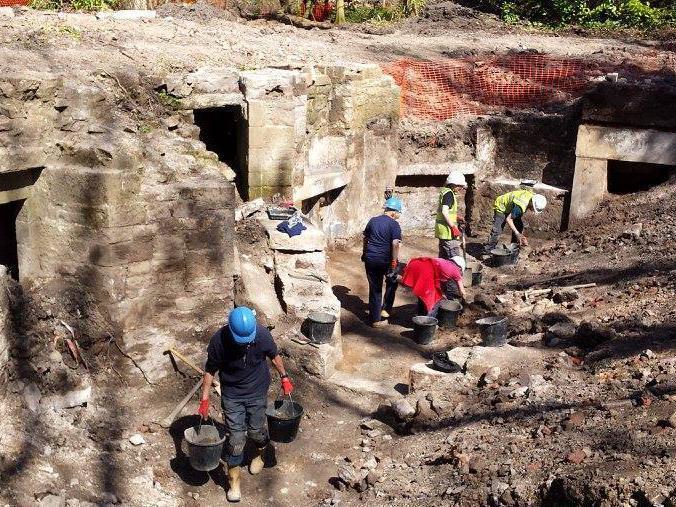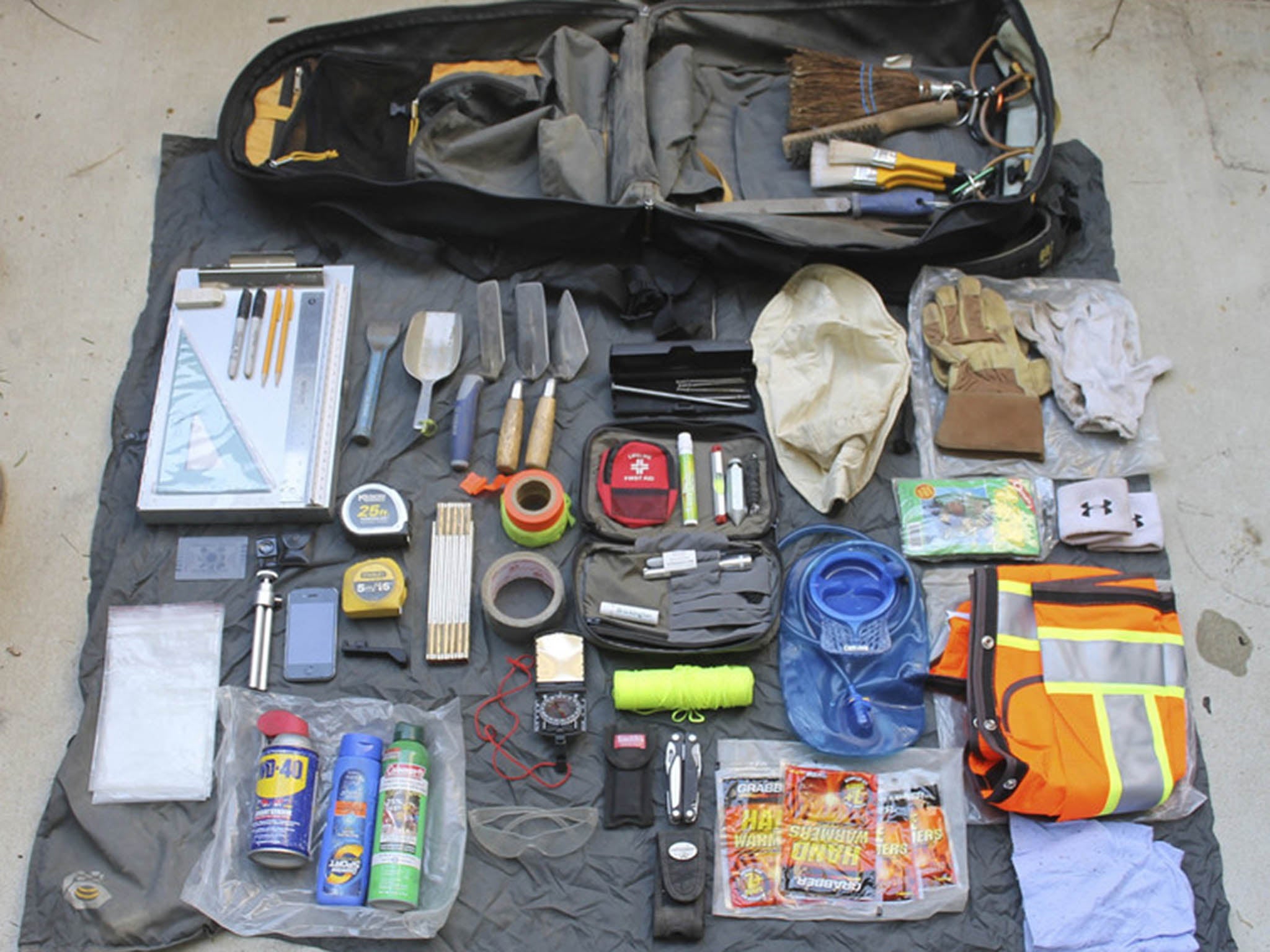How community digs can inspire the next generation of archaeologists
On hundreds of projects across the country, thousands of volunteers are coming together to unearth the past. Michael Dafydd Nevell digs the dirt on the joys of archaeology

Your support helps us to tell the story
From reproductive rights to climate change to Big Tech, The Independent is on the ground when the story is developing. Whether it's investigating the financials of Elon Musk's pro-Trump PAC or producing our latest documentary, 'The A Word', which shines a light on the American women fighting for reproductive rights, we know how important it is to parse out the facts from the messaging.
At such a critical moment in US history, we need reporters on the ground. Your donation allows us to keep sending journalists to speak to both sides of the story.
The Independent is trusted by Americans across the entire political spectrum. And unlike many other quality news outlets, we choose not to lock Americans out of our reporting and analysis with paywalls. We believe quality journalism should be available to everyone, paid for by those who can afford it.
Your support makes all the difference.The saying goes the past should be left in the past, but not of course when it comes to archaeology. In fact, if recent figures are anything to go by, it seems many of us can’t get enough of the past influencing our present – more than 70 per cent of adults visited a historic site in England within the last year.
Membership of the two largest voluntary heritage organisations in the UK has also increased significantly in the last 10 years – this is despite the recession. National Trust membership is up by 8 per cent with 4.3 million members, and English Heritage is up by 10 per cent, with 932,000 heritage enthusiasts now on its books.
Hands-on experience has been key to this growth, and the Heritage Lottery Fund has been a big driver in encouraging members of the public to participate in the survey, excavation and research of their own past. Between its founding in 1994 and 2010 the fund awarded £144m to more than 850 projects that focused on archaeology. And of these 550 were community archaeology projects.
These are projects like “Revealing Oldknow’s Legacy” which aims to conserve the Stockport-based Georgian industrial pioneer Samuel Oldknow through the remains of his cotton mill and lime kilns. Or the “Thames Discovery Project”, which since 2008 has been training volunteers in the recording of archaeological features and artefacts at low tide on the Thames foreshore.
Supported projects also help to communicate the value of archaeology in understanding the past – such as CITiZAN, which is training members of the public to record coastal archaeology before it is lost. This is alongside projects that help to improve archaeological sites, like Roman Maryport, where excavation and survey has uncovered and helped preserve a huge Roman settlement. And the Vindolanda, arguably Britain’s best explored and interpreted Roman fort along Hadrian’s wall.
And then there are those projects that save local historic buildings like Finchingfield Guildhall in Essex and Stotfold Watermill on the River Ivel in Bedfordshire.
Future finds
It seems strange then that all this excitement about the past is happening at a time when in the educational world, archaeology seems to be falling out of favour – with the exam board AQA recently announcing they will be dropping the subject. This has led to a campaign to save A-level archaeology, and which was recently debated in Parliament.

But while it may be tempting to view the campaign to save the archaeology A-level as the reaction of a small, educated, middle-class elite, devoted to a hobbyist pastime, this is simply not the case.
Yes, only around 300 students took the full A-Level in archaeology and just 600 the AS Level archaeology course in 2016. And yes, the archaeology profession only employs around 5,500 people in the UK. But the reach of archaeology goes much wider than that.
Archaeology challenges many of the more traditional approaches to the past by focusing on a bottom-up approach. This helps to spread involvement across all sectors of society. And can be seen in the numbers of people involved in volunteer and community-run dig sites all across the country.
‘I dig therefore I am’
One strand of the Dig Greater Manchester community archaeology project run by the Centre for Applied Archaeology at Salford University between 2011 and 2016, was the “I Dig therefore I am” research. Undertaken with my colleague Sharon Coen, the research explored the role played by volunteers participating in community-based archaeological projects in developing and constructing place-identity and attachment.
Our research showed that the project enriched volunteers not only at a personal level, but also at a social one. This was because the archaeological activities gave them the opportunity to make new friendships – with people they wouldn’t ordinarily meet – as well as encouraging them to engage with their community.
And Historic England estimates that such volunteers contribute significantly to research on archaeology and heritage. Between 2011 and 2016 around 12,000 volunteer projects contributed over 20,000 research outputs towards understanding a shared past, representing a huge well of citizen science expertise.
The excitement of discovery
In 1985 a report by the Council for British Archaeology showed there were around 100,000 archaeology volunteers spread across roughly 450 societies. In 2010 this had grown to around 215,000 volunteers who, annually, undertook archaeological work across roughly 2,030 organised groups.
While excavation is the most common activity of these groups, they also attend talks or lectures, lobby on heritage issues, undertake landscape field walks and record finds through photography.
But of course, archaeology is not all about excavation. The Norfolk Medieval Graffiti Survey for example is an entirely volunteer-led community project, and is the first large-scale study of early graffiti in the UK.
The images and writing that are being revealed are changing our understanding of the way we look at medieval church heritage and the everyday life of the people who used these buildings. And it shows that some of our modern graffiti artists are not quite as rude or wry as these medieval voices of the past.
Michael Dafydd Nevell is head of archaeology at the University of Salford. This article first appeared on The Conversation (theconversation.com)
Join our commenting forum
Join thought-provoking conversations, follow other Independent readers and see their replies
Comments